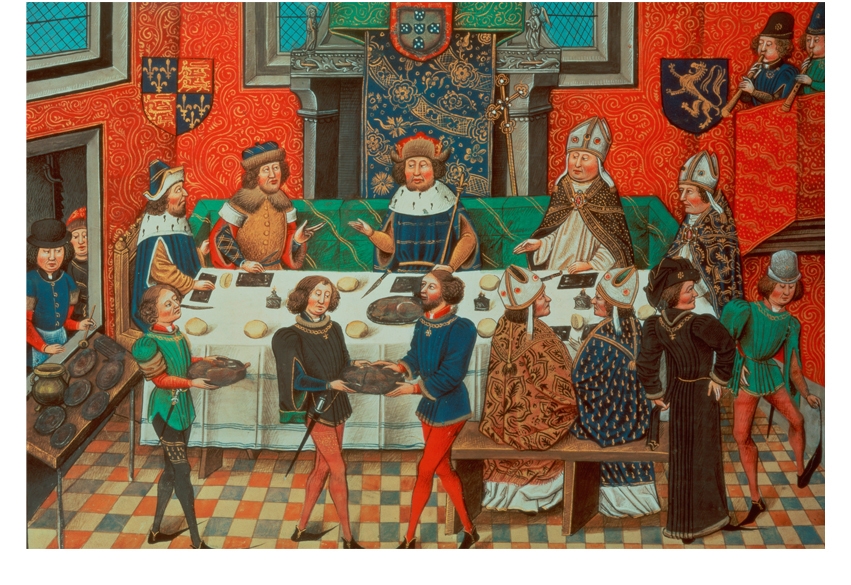It is where cookery is involved that tele-vision gives perhaps the greatest succour to the book trade. After Jennifer Paterson’s death in 1999, the remaining ‘Fat Lady’ barrelled into view with Clarissa and the Countryman, Clarissa and the King’s Cookbook, as a gamekeeper in an episode of Absolutely Fabulous and as presenter for a documentary on her soul-mate Hannah Glasse. Such exposure, combined with an unapologetic mien and candour that have attracted the somewhat patronising description ‘national treasure’, could only have helped her autobiography Spilling the Beans scale the heights of the bestseller lists and allowed the next manuscript, a year-long diary and rant called Rifling through My Drawers, to be published.
Histories of our indigenous food could occupy a longish shelf. Consider just Colin Spencer. British Food: An Extraordinary Thousand Years of History published in 2002 has been followed this year by his From Microliths to Microwaves: The Evolution of British Agriculture, Food and Cooking (Grub Street, £20). What Clarissa brings to her less stringent, more capricious, generously illustrated account is a magical sense of almost having been there at every twist and turn, such is her passion for livestock, animal husbandry and cultivation of the edible.
Anyone even mildly familiar with the book’s subject — the way the poor ate poorly, the mad extravagance of a court banquet, the self-satisfying diet of the clergy, the odd absence of forks at table until the early 17th century, the importance of etiquette, four-and-twenty blackbirds baked in a pie — will not find many revelations, although plenty of engaging detail. There are too many suppositions and fancies. Finding a sort of sisterhood with Eleanor of Aquitaine, it appears that Clarissa simply wants to credit her, on no real evidence, with introducing spices to England. Linking the dissolution of the monasteries with the appearance of wild rabbits is more defensible.
It is when Clarissa stomps into the history to compare knowledgeably, because she has eaten them, the taste of swan, moorhen and rook, praise the unexpectedly white meat of beaver tail and draw on a childhood (she is two years younger than me — maybe I wasn’t in the right place) when local sturgeon were for sale, rough boys sold live eels along Hammersmith Mall, charcoal burners plied their trade in the woods and Ashkenazi Jews ‘filled the East End with little shops’ that the book comes to life.
It comes to an end in what seems like a purposefully truncated manner. The roll- call of chefs in the chapter ‘Modern English Food’ stops at Alastair Little, Anthony Worrall-Thompson and Marco Pierre White. Surely Heston Blumenthal’s work on historic English food is worth a mention, as indeed is the current movement for sourcing food locally.
Excerpts from books, manuscripts and other quotations used liberally and at length attest to Clarissa’s life as a bibliophile. Chaucer’s Middle English can be wearing, but it is good to read again his portrayal of the table manners of the Prioress:
Hir over-lippe wiped she so clene That in her coppe ther was no ferthyng [speck] sene Of grece, whan she drunken hadde her draughte.
Clarissa, who drunken hadde her draughte too well and now no longer does, mentions, touchingly wistfully, how she would like to taste, but never will, Sir Kenelm Digby’s recipe for sack, sherry flavoured with clove gillyflowers (carnations), a ‘great Cordial’. She does stipulate her final meal, which Shaun Hill, chef of the Walnut Tree Inn has agreed to prepare. I’ll leave you to look for it in what will be one of the better culinary Christmas presents.





Comments